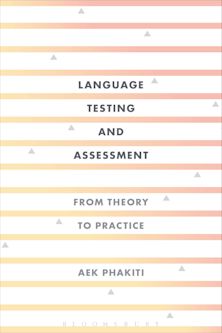- Home
- ACADEMIC
- Education
- ELT and TESOL
- Children's Literature and Learner Empowerment
Children's Literature and Learner Empowerment
Children and Teenagers in English Language Education
Children's Literature and Learner Empowerment
Children and Teenagers in English Language Education
You must sign in to add this item to your wishlist. Please sign in or create an account
Description
Children's literature can be a powerful way to encourage and empower EFL students but is less commonly used in the classroom than adult literature. This text provides a comprehensive introduction to children's and young adult literature in EFL teaching. It demonstrates the complexity of children's literature and how it can encourage an active community of second language readers: with multilayered picturebooks, fairy tales, graphic novels and radical young adult fiction. It examines the opportunities of children's literature in EFL teacher education, including: the intertexuality of children's literature as a gate-opener for canonised adult literature; the rich patterning of children's literature supporting Creative Writing; the potential of interactive drama projects. Close readings of texts at the centre of contemporary literary scholarship, yet largely unknown in the EFL world, provide an invaluable guide for teacher educators and student teachers, including works by David Almond, Anthony Browne, Philip Pullman and J.K.Rowling. Introducing a range of genres and their significance for EFL teaching, this study makes an important new approach accessible for EFL teachers, student teachers and teacher educators.
Table of Contents
1. Introduction: The EFL Literature Classroom
Part I: Visual Literacy in the EFL Literature Classroom
2. Developing the Mind's Eye with Picturebooks
3. Bridging a Curricular Gap with Graphic Novels
Part II : Literary Literacy in the EFL-Literature Classroom
4. Postmodern Fairy Tales: Co-constructing Meaning
5. The Poetry of Children's Literature and Creative Writing
6. Children's Plays: Beyond the Oracy/Literacy Dichotomy
Part III: Critical Cultural Literacy in the EFL Literature Classroom
7. Radical Children's Literature and Engaged Reading
8. Harry Potter and Critical Cultural Literacy
Conclusion
Bibliography
References
Index
Product details

| Published | 22 Jul 2013 |
|---|---|
| Format | Ebook (PDF) |
| Edition | 1st |
| Extent | 344 |
| ISBN | 9781441153395 |
| Imprint | Bloomsbury Academic |
| Illustrations | 45 illus |
| Publisher | Bloomsbury Publishing |
About the contributors
Reviews
-
This is an important publication for all working in English language education, not only for those working and researching young learner and teenage learning, but for those involved in reading and in the reading of literature ... Bland writes clearly and intelligently and has productively absorbed and applied a wealth of relevant and recent research ... I am convinced [this book] will become widely cited and known as more relevant readers find it, read it and see the need to recommend the author and the title ... and I would be pleased if this review can contribute to a speedier uptake of the ideas found therein
CLELE Journal
-
Relevant and accessible ... For me undoubtedly [this book's] strongest point is that every approach advocated is exemplified with engaging texts and tasks. The book is very persuasive in that all its major points are supported by relevant references to credible research ... [A] very impressive and valuable book which I really enjoyed reading.
ELT Journal
-
This is a comprehensive, innovative and thematically coherent book which provides powerful arguments for engaging with a wide variety of genres within children's and young adult literature ... A worthwhile contribution to modern EFL teaching methodology
Maria Eisenmann, Anglistik: International Journal of English Studies
-
With confident writing on children's literature as a 'highly expressive carrier of cultural meaning', the book contains excellent close readings of many picturebooks and graphic novels ... Packed with good ideas for using selected books as positive resources for literary language learning
Victoria de Rijke, Middlesex University, UK, IRSCL
-
Bland's volume does indeed fulfil her aim of generating a rationale for selecting works of children's literature for use in EFL classrooms and identifying how certain kinds of literature might empower learners ... I have already added it to my own student teachers' reading lists.
Lydia Kokkola, Head of English and Education, Luleå University of Technology, Sweden, International Research Society for Children's Literature (IRSCL)
-
[An] impressive feature of the book is the close segmental reading of diverse examples of children's literature and graphic novels ... Children's Literature and Learner Empowerment provides a theoretical and practical approach to providing ELL primary and secondary school learners with the use of authentic and engaging materials.
IATEFL Voices

ONLINE RESOURCES
Bloomsbury Collections
This book is available on Bloomsbury Collections where your library has access.




































